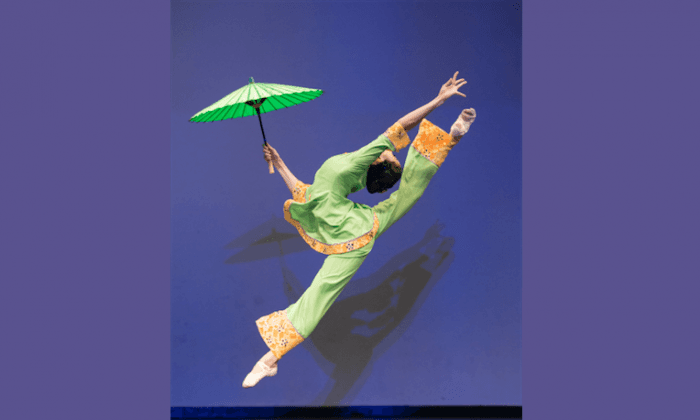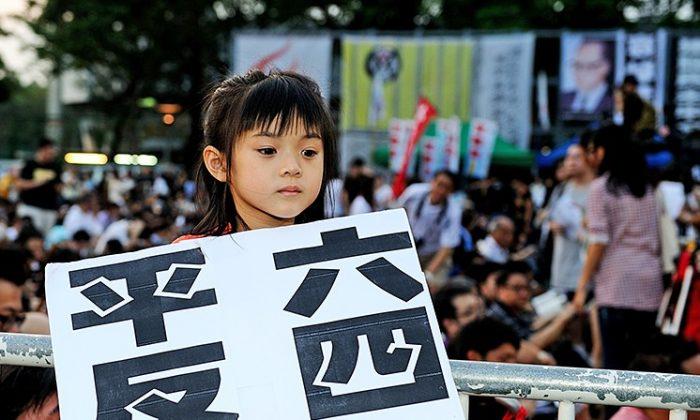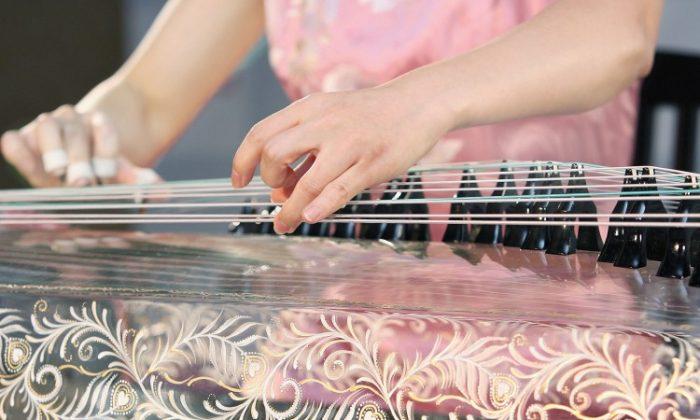NEW YORK—New Tang Dynasty Television’s International Classical Chinese Dance Competition is coming back. For the first time, the organizers arranged a preliminary competition in Hong Kong, hoping to attract talented classical Chinese dancers from China.
The first preliminary round will be held in Hong Kong on Aug. 18 at the Public Hall of Caritas, while the North American preliminary round, as well as the second and final rounds, will be held at New York’s Tribecca Performing Arts Center in October.
The competition aims to launch “a new era in classical Chinese dance by fostering cultural exchange, making this ancient Chinese culture renowned throughout the world, and promoting purely authentic traditional dance that is pure goodness, and pure beauty,” according to its mission statement.
With the success of the global tours by New York-based Shen Yun Performing Arts, many in the dance community worldwide have had opportunities to witness the profundity and beauty of classical Chinese dance.
“Classical Chinese dance is becoming ever so popular in the Western society and there is an increasing need for performers and teachers. Many of our past winners who came from China were provided with a broader range of opportunities outside of China after they competed in the competition,” said Ma Lijuan, Director of New Tang Dynasty Television’s Competition Series.
Ms. Ma revealed that although there is a large number of professional dance institutes in mainland China, many dancers had to take on other careers due to the limitation of opportunities for classical dancers there.
The Competition Meets Difficulties in Hong Kong
The organization of the competition in Hong Kong has met with difficulty for contestants from the mainland, which comes from the Chinese government. According to Ms. Ma, a secret order is pressuring dance schools to prevent their students from participating in the competition. The pressure comes from the communist regime. Some dance students who have submitted registration forms to the competition have been threatened.
“Officials from the Political and Legislative Affairs Committee told the contestants that they would not be able to receive travel documents. We have also had feedback from schools that have been ordered to tell students not to come to our competition. Some of those who have registered with us were told that if they did not give up [the registration], they would be expelled from school and no longer be able to have a career in China,” Ma said.
The Political and Legislative Affairs Committee is a powerful organ which oversees all legal enforcements, and often takes the role to suppress dissidents and put down politically sensitive issues.
Ms. Ma wants to assure dancers from China so that they will not to be frightened by the Chinese government and will seize the opportunity to participate in bringing this traditional art form to the world.
Classical Chinese Dance
Classical Chinese dance includes systematic training in different postures, movements, and techniques.
There are two key concepts in classical Chinese dance: form and bearing. Form refers to the coordination of intricate dance movements, such as a good balance between the direction of the eyes, the pose of the fingertips, and the body.
Bearing is the expression of cultural heritage formed in ancient dynasties through dance movements.
Tumbling techniques are often incorporated to demonstrate key components of form and bearing, but they are only considered to supplement classical Chinese dance.
“If a dancer’s attitude is positive and upright, his or her performance will reflect that,” said Chen Yongjia, an expert and instructor in classical Chinese dance, who will be among the panel of judges of this year’s competition.
Chen pointed out that the spiritual world of a dancer constitutes the most important part of a good classical Chinese dancer.
Chen graduated as a top student in traditional dance from Minzu University of China and has been a dance teacher for over 20 years. He is a two-time winner of China’s Peach and Plum Dance Competition, the most prestigious traditional dance competition in China.
Understanding Chinese traditional values is essential. Chen Yongjia takes the ancient story “Journey to the West” as an example. In the story a monk and his four disciples head to the West to obtain Buddhist scriptures and encounter demons and tests on the way.
“Chinese culture includes respect for the divine and values such as trust, benevolence, and propriety,” said Chen Yongjia, who added that these qualities should be understood when portraying characters from “Journey to the West.”
Due to the Cultural Revolution in Mao’s era and influence from modern culture, the essence of classical Chinese dance has not been well preserved among the Chinese people. In China, classical Chinese dance performances take in positions and movements from ballet.
In Taiwan, the dance form does not separate itself from Chinese opera and only emphasizes props and certain movements without showing the necessary spirit. Authentic classical Chinese dance is completely different from ballet, modern dance, opera and martial arts,” said Chen.
Continued on the next page ... This Year’s Competition
This Year’s Competition
This year is the fifth time that New Tang Dynasty Television will host the International Classical Chinese Dance Competition. It is part of the TV company’s competition series aimed at reviving traditional Chinese culture. The series also includes competitions for painting, classical Chinese couture design, violin, piano, photography and culinary arts.
The junior division covers ages 13 to 17, while the adult division covers ages 13 to 40. Each division is also separated into male and female subdivisions. Gold winners of each division will receive an award of $10,000.
Each contestant is required to prepare a 3-minute dance in the form of either a solo, duet, or trio dance. In the past, contestants have chosen a wide range of characters, from historic figures like Mulan, the monkey king or the emperor of a certain dynasty, to heavenly beauties, who use props like traditional Chinese instruments.
The second part of the competition consists of a showcase of dance and tumbling techniques, which last between one and a half to two and a half minutes long. A complete list of required techniques for each division can be found online at [1] or [2].
“The audience will witness strong dance techniques and artistic expression by the contestants,” said Ma Lijuan. “Each piece is based on a story. The performer will play a historic figure or make a traditional story come alive on stage. The profundity of classical Chinese dance and its ability to portray a wide range of characters will help the audience become immersed in the stories.”
email [email protected]
Read the original Chinese article.
The Epoch Times publishes in 35 countries and in 19 languages. Subscribe to our e-newsletter.






